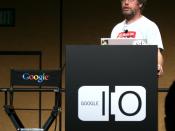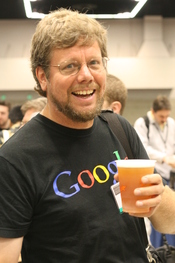The evolution of computer programming languages has given programmers liberty to choose what language they use to program. Many concerns arise to whether the language chosen is the right one for a particular problem, or is the language suitable for adaptation for future manipulation. Other concerns include the maturity, syntax, features, functionality and scalability of a language. To illustrate the above concerns, I will write a brief comparison between two popular programming languages: C/C++ and Python.
The maturity of C/C++ and Python differs great in regards to history. Dennis Ritchie, who used it to re-write the Unix environment, developed C, a predecessor of B, in the early 1970's. C++ evolved from C and was initially designed and implemented by Dr. Bjarne Stroustrup at AT&T Bell Labs. The first commercial release happened in 1985. The language gained widespread use in industry and academia during the 1980s, and around 1990 the major computer and software tools suppliers started to provide C++ to their users as a major implementation tool.
After explosive growth of the C++ user population in the 1980s and early 1990s where C++ usage doubled every 7.5 months, the use of C++ has settled into a pattern of steady growth. In 1987 C++ became standardized and its popularity increased steadily. Python's development started years after C++ was standardized. Guido van Rossum developed Python, a little over ten years ago in 1990. Development of Python occurred very rapidly, due to it's open-source capabilities. The consistency of Python, due to changes of the language must be obtained form a central organization (CNRI in Reston, VA), has keep it almost "bug-free" and easy to manipulate. Due to Python's youth, it's following is relatively small compared to the standardized C/C++. Although Python has grown exponentially in ten years, C/C++ holds an edge because of...


